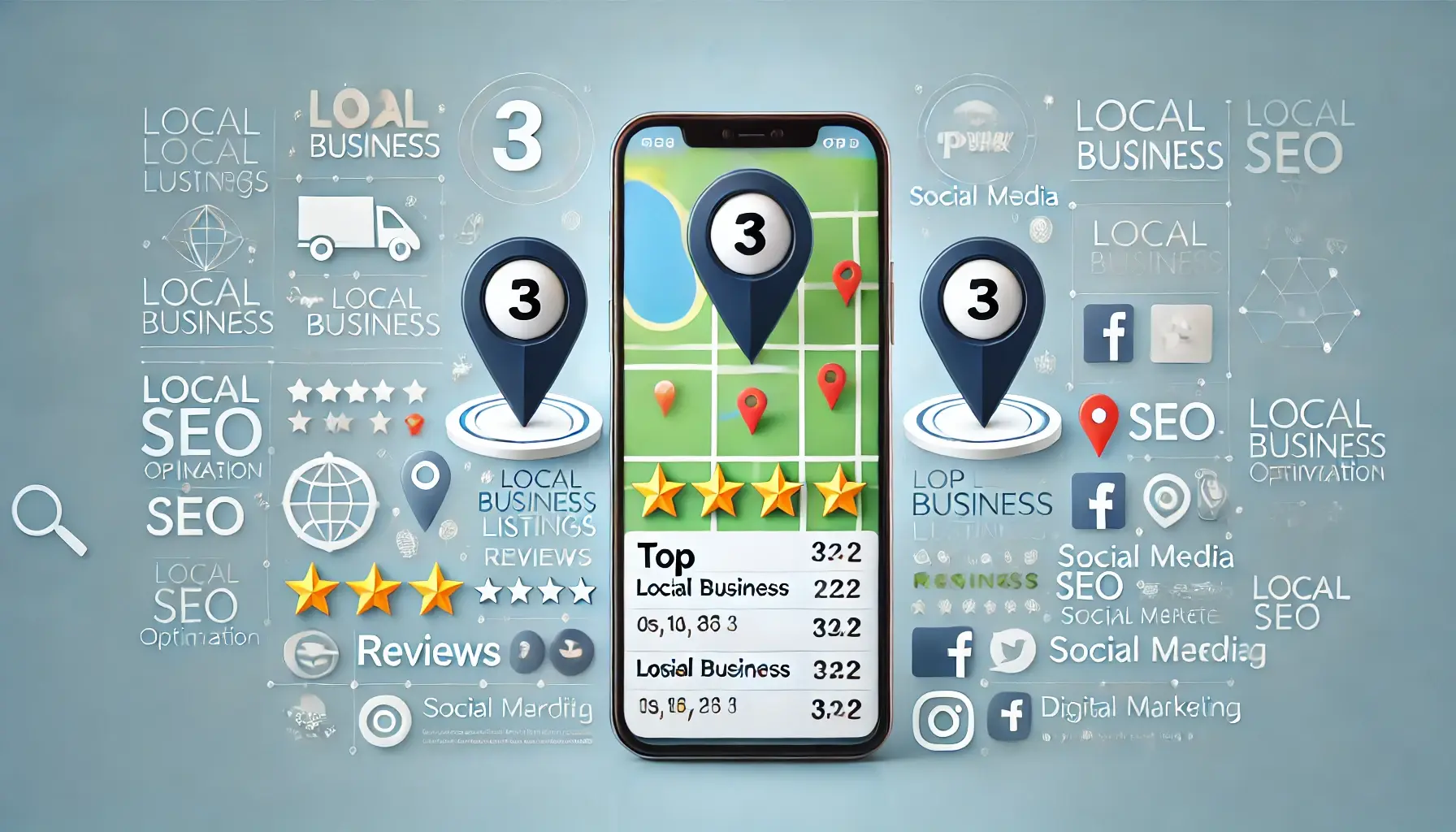
Learn how to master SEO keyword research with this straightforward guide. I'll show you how to find and select the best keywords, plus how to seamlessly integrate them into your content strategy to boost your SEO performance (and maximize your ROI). Let Blumoo Creative guide you every step of the way!
Keyword research is crucial for nailing search engine optimization (SEO) and boosting your conversions and revenue. Every business, no matter their digital marketing savvy, should know the ropes of keyword research.
In this beginner’s guide, you’ll learn the essentials of keyword research for SEO, so your company can supercharge its SEO performance and returns. Here’s what we’ll cover:
- What is keyword research?
- Why is keyword research important?
- How to research and incorporate keywords
- How to choose the best keywords
- Best keyword research tools for your business
Dive in to discover the secrets of SEO keyword research! And if you need some handy tools, check out SEO.com, a free DIY option for keyword research!
What is keyword research?
Keyword research is all about finding, analyzing, and selecting the search terms people use to get results from search engines. In SEO, these keywords guide search engines to accurately rank pages in search results and help users grasp the context of a page.
For instance, if you Google "bike shops in Wilmington, NC", that's your keyword, and these are the most relevant results:
[results image]
This keyword tells Google exactly what information you're looking for. By conducting keyword research for SEO, you can guide Google (and your audience) on what your site is all about.
Why is keyword research important?
Finding keywords is crucial to your SEO process because it targets users' searches from the start and builds content around their needs. Keyword research for SEO is essential for several key stakeholders, including:
- Search engines: Search engines like Google use keywords to rank websites in search results. For example, a blog post with a title tag featuring the keyword "best running shoes" and a list of the best running shoes signals to search engines that it’s a relevant page to display for searches using that keyword.
- People: Searchers use keywords to find content online and decide which links to click on in search results. Someone looking for the best running shoes, for instance, is more likely to click on a blog post compiling the best shoes rather than a single product page.
- Companies: Businesses that conduct keyword research typically see a higher return on investment (ROI) from their SEO efforts because they target the most valuable keywords. A company that does SEO keyword research might focus on long-tail, low-competition keywords, for example.
Knowing how to research keywords allows you to make data-driven decisions about your SEO strategy. Instead of guessing what your target audience searches for, you understand which terms will help users find your business.
How to Research and Incorporate Keywords
Understanding the importance of SEO keyword research and integration is one thing, but how do you actually get started? Here are eight steps to help you find and incorporate SEO keywords effectively:
- Brainstorm potential keywords
- Research competitor keyword targeting
- Compile a list of long-tail keywords
- Use a keyword research tool
- Choose the best keywords to use
- Integrate keywords throughout your site
- Organize your keyword hierarchy
- Make keyword research continuous
Keep reading to learn the details of how to research and implement keywords for SEO.
How to Research and Incorporate Keywords
Understanding why SEO keyword research and integration is important is one thing, but how do you get started? Here are eight steps to help you find and incorporate SEO keywords:
1. Brainstorm potential keywords
The first step in keyword research is to brainstorm a list of possible keywords. These keywords can be broad and cover anything related to your industry, products, or services.
For example, a bike shop in Harrisburg might use keywords like “bike shop,” “bike rack,” “bike seats,” or any other bicycle parts you sell. You can also use location-based keywords that describe your state, city, region, or area.
2. Research competitor keyword targeting
Check out your competitors’ websites to see what keywords they use to describe similar products and services. Analyzing your competitors can provide original ideas and guide the rest of your keyword research.
As you search for keywords, note which sites rank high in search engine results pages (SERPs). Use these websites as a “seed list” for keyword ideas. For example, entering a website in SEO.com can show you its keyword rankings:
SEO.com keyword research example
Filter by topic, URL, position, and more to find relevant ideas. Ensure the topics are relevant to your audience when researching keywords based on competitor data.
3. Compile a list of long-tail keywords
Expand your basic list into a longer list of long-tail keywords. Short-tail keywords are around 1–2 words and are vague, while long-tail keywords are around 3–5 words and offer more detail.
The keywords from step one might be short and generic, like “bike shops.” Thousands of businesses across the country might try to rank for that keyword. As a local business, you’re unlikely to rank in the top 10.
Instead, find longer, more specific keywords indicating a user is looking for the parts you offer or a bike shop in your area. Instead of “bike shop,” try “bike shop in Harrisburg, PA” to narrow the search intent.
4. Use a keyword research tool
While you can rely on Google’s suggested searches, this approach can take significant time. We recommend using a keyword research tool like KeywordsFX. This step expands your keywords based on user search trends and data.
When you type a keyword into KeywordsFX, you’ll get an alphabetized list of all variations that users commonly search in Google.
KeywordsFX bike rack example
For example, if you type “bike rack,” one result is “bike rack for Audi Q5.” This result means many users have searched for that exact phrase on Google. If you sell a bike rack compatible with this car, you might want to target this keyword.
Depending on the keyword entered, you might get an overwhelming list of suggestions. Note the ones most relevant to your business. Repeat this process for every keyword on your original list to expand your options.
5. Choose the best keywords to use
Now that you have a wide range of keywords, it’s time to pick the ones you intend to target. Consider factors like:
- Relevance
- Authority
- Volume
You can find more about choosing the right keywords later on this page. Once you’ve made your choices, start integrating those keywords into your content.
6. Integrate keywords throughout your site
Adding keywords to your website is essential. If you have quality keywords but don’t know how to integrate them, all your effort will be wasted. Here are some tips:
- Focus on one target keyword and 3–5 supporting keywords that highlight your page topic.
- Add the target keyword to the page title, title tag, and meta description.
- Use the target or main keyword within the first 100 words of your page.
- Avoid adding an outgoing link with your keyword anchor text.
- Aim to use each keyword naturally twice.
Our keyword density tool makes it easy to see where your keywords are and if you need to add or remove some.
7. Organize your keyword hierarchy
With your keyword list, determine how to incorporate them on your site. Connecting keywords and showing their relationships can better serve Google and your users.
If you have pages for some keywords, add the keyword to your title tags, header tags, meta descriptions, and other HTML elements, as well as the body copy. If you found keywords without supporting content, use this opportunity to create more content and pages that will help your customers.
Build internal links to show how your keywords relate. For example, if you have a parent page on bike parts, you might link to pages on bike racks, wheels, chains, and more.
Avoid keyword stuffing or adding keywords where they’re not relevant or necessary. Write all content with your users in mind to inform potential customers.
8. Make keyword research continuous
As you optimize your site, continue to do keyword research as needed. Over time, this process will help you identify more keywords helpful to your customers and keep your keywords relevant to changing search volumes and trends.
For example, the keyword “bike rack for 2024 Nissan Pathfinder” might be valuable now, but there will be a newer model in five years that users will search for.
How to Choose the Best Keywords
When selecting keywords to use, it's essential to ensure you’re picking the best options for your business. To do this, consider these three main factors:
- Relevance
- Authority
- Volume
Let’s dive into each one:
1. Relevance
Relevance refers to how well your keyword matches the user’s intent — their goal behind a search. Your content and keywords will rank well if they align with the user’s intent.
Google aims to provide searchers with results that meet their needs. The algorithm uses your keywords to determine if your site is relevant and should appear in the results.
Using keyword clustering can help you organize the keywords you select by intent and keep your content relevant.
2. Authority
Google ranks sites it considers authoritative higher than others. They aim to deliver the best results, including finding websites with established domains and reputations.
So, how can you prove your authority?
Many sites do this by creating quality, informative content that helps users and earns backlinks. It’s also helpful to understand the impact of expertise, authority, and trustworthiness (EAT) on your rankings.
If there are major industry leaders (like the New York Times or Mayo Clinic), it might be harder to rank. However, you can look to these sources for inspiration to improve your authority.
3. Volume
Keyword volume is measured by monthly search volume (MSV), which shows how often a keyword is searched in a month. You might rank for keywords, but if they have a low MSV, you’re less likely to reach many people.
You want to find keywords with a good search volume to address users’ queries. SEO.com can help by providing search volume data and the keyword’s estimated difficulty.
Bonus: Cost-per-click (CPC)
The three metrics above are sufficient for SEO. However, if you’re researching keywords for paid search ads, you should also consider cost-per-click (CPC).
CPC data from Google Ads indicates how many advertisers are trying to place ads for that keyword. The higher the CPC, the more challenging it will be to rank for that keyword.
The ideal keyword has a high MSV but a low CPC, meaning many users search for this information, but not many websites are trying to rank for it.






















